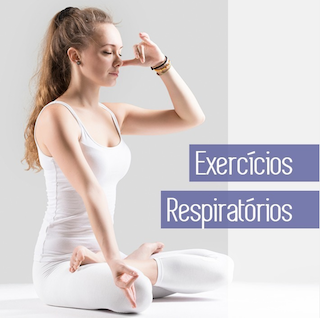Hello readers!
Today I decided to talk about the importance of Breathing in Chinese Medicine.
We always talk about needles, moxibustion, cupping, auriculotherapy and other techniques, however, the vast majority of them are only possible once the individual seeks professional help. That’s why I’ve decided to write this text. Breathing exercises are an excellent way to perform self-care.
Do you know why?
In Chinese Medicine, the main organ for energy transformation is the Lung. It receives the air we breathe (which by itself is already consider a kind of Qi/energy), receives food energy (or Gu Qi) from Spleen and then turns it in Wei Qi (defense energy) and Ying Qi (Nourishing energy). Thus, we realize the Lung is the organ responsible for our immunity and also for our body tissues nourishment.
On top of that, the Lung is responsible for the energy dispelling through all the body and it also controls the water path, using breathing movements to send retained body liquids to the Kidney.
Therefore, when we take a little break during the day to exercise our breath and we breathe well, our immunology is improved, our body tissues are better nourished, and there isn’t any liquid retention, besides there is an improvement on our organs effectiveness.
What is breathing well?
Breathing well is being able to take all the air we inhale till our Lung base, the one which is protected by our last ribs and rests over the diaphragm. So, a full breath is the one when we manage to inflate the abdomen.
Usually, throughout the day, we do not have such an effective breath, mostly due to the fact we are always worried, agitated, working, focusing on “another world” or anything but not our breath. This way, although we don’t feel any difficulty breathing or shortness of breath, our usual breath is in no way therapy, so in order to have the therapy effects of breath, I suggest some exercises, to be done daily or at least 3x times a week.
Exercise 1:
- Lay down comfortably, tummy up, arms along the body with hands facing upwards. Inhale and exhale 3 times, slowly and deeply, feel as your body relax and try not to think about anything. Following these 3 initial breaths, picture all energy from your head moving to the inferior region of your abdomen, repeating this path 36x, being each full breath counting as 1 time. After finishing all 36 full breath cycles, slowly move your hand and your feet and you’re free to return your usual activities.
Exercise 2:
- Slowly and deeply inhale and when you cannot fit any more air into your Lungs, hold the air in this maximum inhale position for the most you can. When you can’t hold back anymore, slowly let the air flow back as you exhale, always through the nose. Once you get to the state of maximum exhale, hold this position for the most you can. Then return slowly to inhale maximum capacity again. Repeat this process from 3 to 8x a day. It’s a quick exercise that shall bring to the Lung tons of effectiveness and quality.
Exercise 3:
- Sit yourself in a comfortable manner and close your eyes. Inhale while imagining the energy climbing through abdomen and chest front, getting to the head, place your tongue on the roof of your mouth and exhale while picturing the energy flowing down through the back of your head, going through your back until it reaches your gluteus with the tongue now on mouth floor. Repeat the inhales and exhales from 8 to 36x times.
There are tons of other breathing exercises that shall help Lung and its functions and all of them can be done easily, without the need of a professional.
Keep in mind that on top of all mentioned benefits, the Lung is the organ responsible for our emotions, sadness, angst, frustration, excess of self-criticism..It controls the healthiness of our skin, our voice tone and the capacity of retraction or expansion before the world.
Practicing breathing exercises balances, the then aggressive emotions, keeps our skin beautiful and puts us strong facing life and the universe.
Shall we practice?
Hope that you enjoyed it!
A very tight hug!
Profa. Fernanda Mara